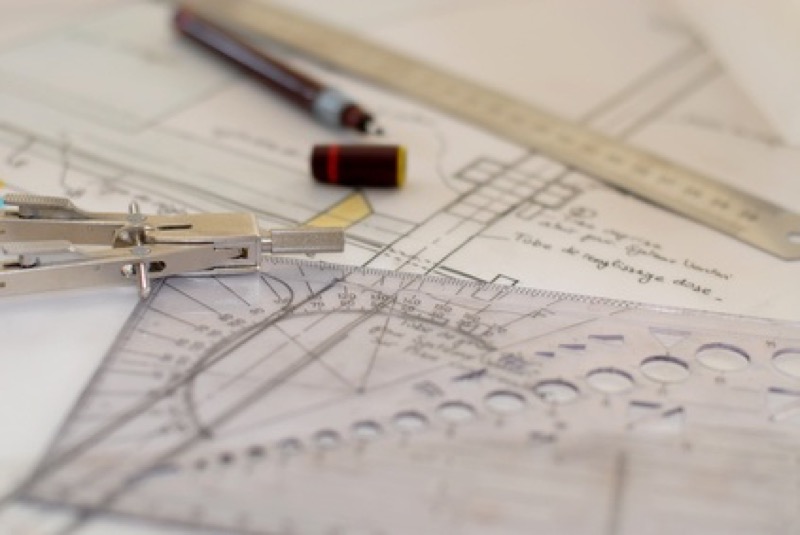Measuring, drawing, cutting, erasing… Technical drawing, depending on how experienced you are, requires many accessories. The perfect panoply for the perfect designer!
Technical drawing: Selecting your accessories
Rate this tutorial

1. Essentials
- Aluminum ruler
- Paper cutter, scissors, utility knife and/or exacto knife (blade mounted on a metal handle)
- Pencil sharpeners and lead pointers in a variety of diameters
- Assorted stumps in various sizes
- Assorted erasers: soft for graphite, kneading for powdery media, vinyl for ink… trim to a point for greater precision
- Protractor, T-square
- Pencil lead and/or pencil compass, able to hold felt-tips
- Masking tape
- Fixative for increasing graphite adhesion
- Fabric rag
Zoom: Maintaining your erasers
Eraser soils your drawing, it's too dirty...
Clean classical erasers by rubbing them on a cotton cloth or washing them in soapy water (don't forget to dry them before using them).
Kneaded erasers are self-cleaning. By kneading them, you fold the charcoal pigment into the eraser and use a clean part. When the eraser becomes saturated with pigment, throw it out.
2. "Extras" for pros
45° and 60° squares, the most used angles.
Ellipse template, with up to 25 graduated ellipses.
A French curve makes drawing curved lines easier. Each model has several different curvatures. While a lot faster to use than a compass, it is nevertheless rigid: you will need to adjust to its set radii!
Flexible ruler: it bends as needed to guide your curves. Use for small diameters, but run the risk of irregularities.
Practical advice: Precise work requires good organization!
Before you begin, don't forget to prepare your working area. To your pens!
Aim your lamp or position your table to light it from the side (from the left if you are right-handed and conversely).
Keep the tools you use the most at your fingertips: depending on how far along you are in your drawing, these can vary.
Place your dry media on a side table before using any wet technique.
Some media such as pastels or graphite release dirty particles. Wipe off your workspace regularly.
Recommended product:
Sketching Tracing Paper
